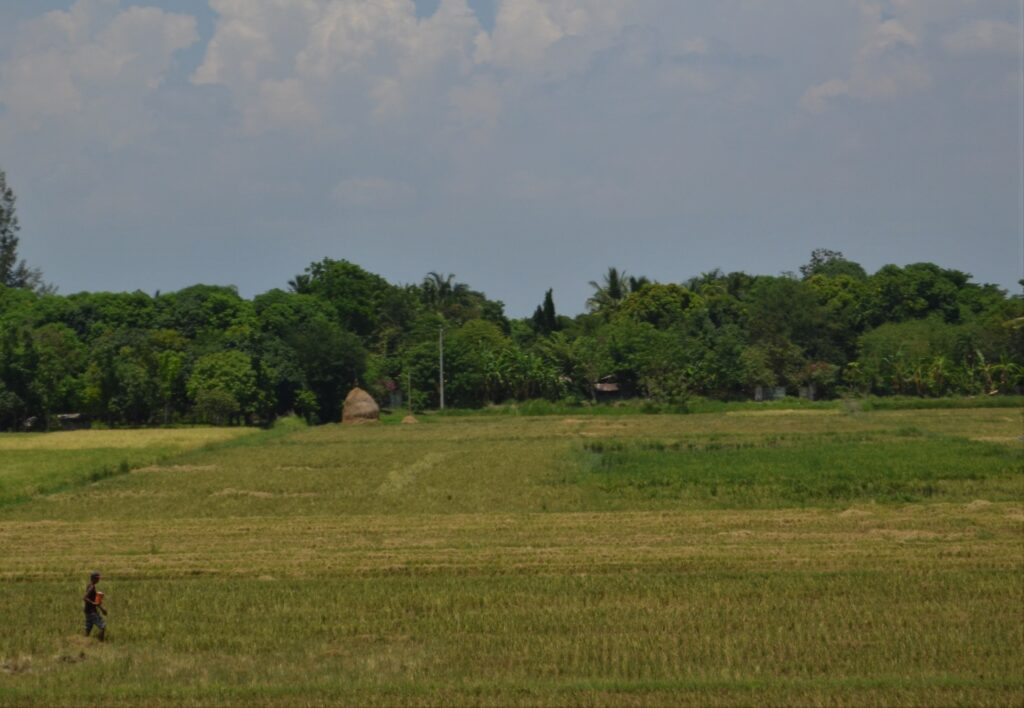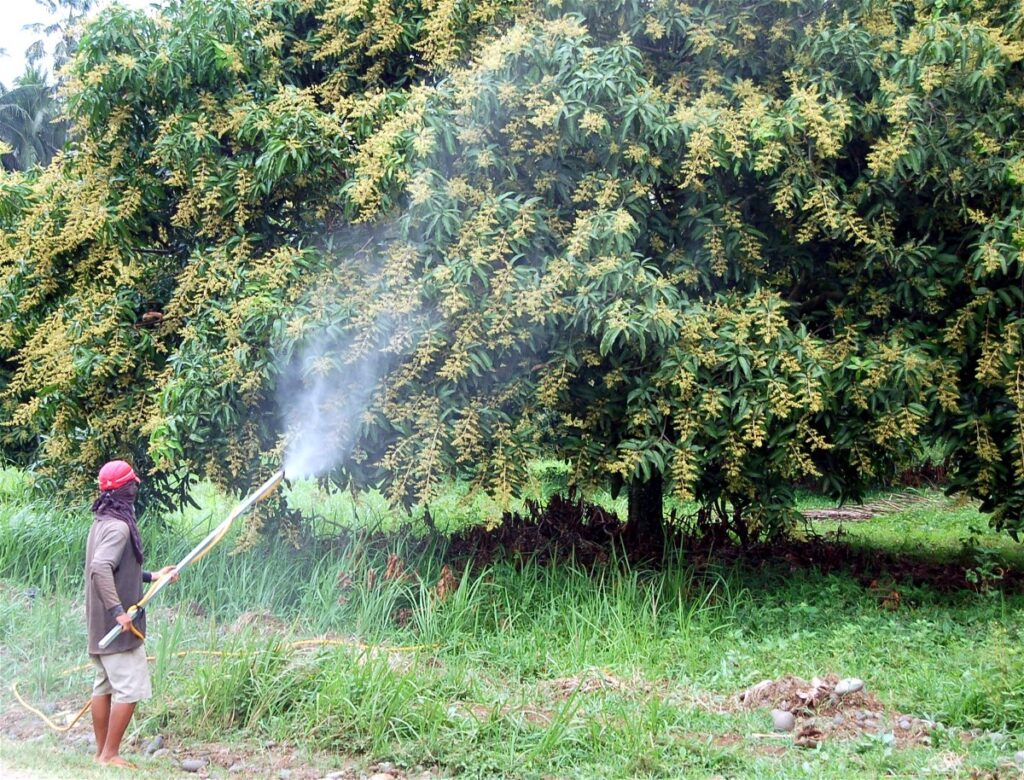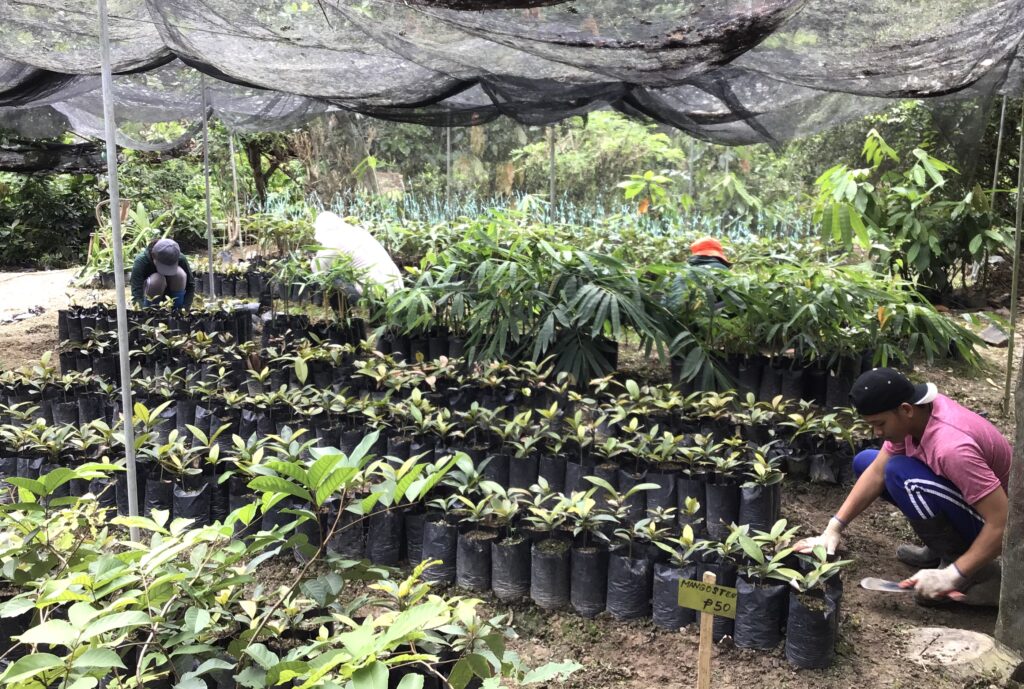Text and Photos by Henrylito D. Tacio
If smallholder farmers in the Philippines want to compete with those having big farms, the best they can do is to employ the so-called agricultural clusters approach. That’s one way of enhancing their competitiveness, according to a new policy paper.
“An agricultural cluster is a strategic approach to operationalize the appropriate channels at a scale necessary for (smallholder farms) to have enhanced competitive strength to connect with national and international markets,” said the paper released by the Laguna-based Southeast Asian Regional Center for Graduate Study and Research in Agriculture (SEARCA).
The agriculture-based small and medium enterprises (SMEs) in developing countries are continuously affected by globalization. “Economic globalization sparked market and technological innovation particularly in the agribusiness sector,” the paper stated. “This resulted in the supply and demand of agricultural products to be centered at a global level.”
In Southeast Asia alone, in 2017, the total imports of agricultural products increased by 2.05%, and its exports increased by 19.15%. “While globalization presents an opportunity for the large farms and corporations, it could exacerbate the weakness of farmers’ bargaining power due to the increasing international and industrial pressures,” the paper said.
The policy paper subscribed to the idea that larger farms are more competitive internationally than smaller farms. But then, it knew that 72% of the farms around the world have a farm size below one hectare.
“In Southeast Asia, the agriculture sector is heavily dominated by small-scale farms with countries having an average farm size below 5 hectares,” said the paper entitled, “Agricultural clusters approach to enhance competitiveness of smallholder farms in Southeast Asia.”
Among the Southeast Asian countries, Thailand has the highest average farm size, with 4.04 hectares, according to a study conducted by the Food and Agriculture Organization (FAO) of the United Nations. With 0.63 hectares, Vietnam has the least average size. The average farm size in the Philippines is 1.29 hectares.
“Southeast Asia is dominated by smallholder farms, but despite their relatively small land size, they account for more than 80% of the food produced and consumed in the large portion of the developing world,” the paper noted.

Despite this, most of the small and medium farms (SMFs) are facing several problems like being located in remote locations and geographically dispersed, making it harder for them to access modern technology, services, and information.
Because of geographic constraint, their profit margin is negatively affected by the market intermediaries involved in the value chain who takes advantage of the farmers’ limited knowledge of the market.
SMFs also face difficulty in entering bigger and overseas markets where they can sell their produce at a higher price. And most importantly, they experience higher transaction costs due to changing preferences of the consumers.
“Overall, smallholder farms lose competitiveness, relative to the commercial farms, due to difficulty in accessing financial institutions and modern innovations that would help boost their productivity,” the paper surmised.
To make these countries competitive in a global scale, the SEARCA paper recommends an agricultural cluster, defined as “the entire range of input-output linkages in production and transaction in good and services.”
The agricultural cluster, the paper stated, has varying forms of cooperation and interactions. “It promotes and supports vertical and horizontal linkages between local agricultural enterprises,” the paper explained.
“The synergistic effect of horizontal and vertical coordination of the cluster plays an important role for small-scale producers to remain and become competitive in the industry,” it continued.
According to the policy paper, a useful agricultural cluster requires a strong market connection and value-adding networks that aid the product flow and development within the market. These connections and networks are interlocked by three relationships or linkages: horizontal, vertical, and support.
Clustering, the paper pointed out, “is a potential tool to rehabilitate agriculture areas under economic stress, as it can increase the SMFs bargaining power through mergers and vertical integration; thus, minimizing risk for farmers and strengthening the relationship between production and market needs.”
One fine example is the vegetable production in Mindanao. A study was conducted to assess the impacts of clustering o the production, the value of output, and net income on vegetable farms. It investigated the performance of farmers before and after joining a cluster.
The components that comprise the cluster, categorized by their type of linkages, were horizontal linkage (farmer-to-farmer), vertical linkage (institutional buyers), and support linkage (the organizations that helped the farmers).

Mango flower induction 
Crop production
Results showed that clustering had a positive effect on the volume of production, as evidenced by its increase in nine out of 11 commodities analyzed. The increase in production triggered an increase in the output value and significant increases in the value of production of six commodities after clustering.
Moreover, the net income from vegetable production was also seen to significantly improve for most vegetables after joining a cluster. The highest increase was accounted for in sweet pepper, eggplant, chayote, and tomato.
On average, income from vegetable production increased by 47% from P4,909.00 per month to P7,192.00 per month after the project. “Clustering was indeed effective in elevating the farmers’ household income,” the study concluded.
In addition to realizing the economic benefits of clustering, the think tank also reported the case in Malaysia in terms of rice production. The clustering logged the added advantage of knowledge transfer among farmers, local enterprises and markets, research and development agencies, financial institutions, government agencies, and other marketing firms.
Vital information shared included good agricultural practices, the prevailing market risk, source of inputs, and awareness of new technologies and innovation.
These successes had led SEARCA to recommend agricultural clusters as a strategic approach “to operationalize the appropriate channels at a scale necessary for it to have enhanced competitive strength to connect with national and international markets.”
Dr. Glenn B. Gregorio, SEARCA director, urged government agencies and research and development (R&D) institutions must promote specific institutional interventions to facilitate the intended benefits of the agricultural clusters.
According to him, an umbrella of programs and institutions to support agricultural clusters at the national level can be provided by the government. Meanwhile, R&D institutions can serve as “cluster champions” to strengthen the technological capacity of cluster members and promote partnerships.
Dr. Gregorio agreed with the words of German-born British economist E.F. Schumacher that small is beautiful. However, he added that “big is powerful.”
Dr. Gregorio is the lead author of the policy paper. His co-authors were Rodolfo V. Vicerra, Rico C. Angcog, Nikka Marie P. Billedo, Rebeka A. Paller, Ma. Christina G. Corales, and Imelda L. Batangantang.

